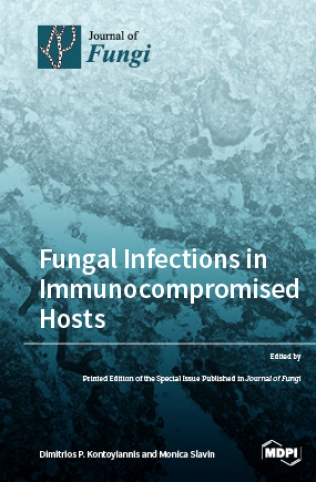中国云南的三个松露新种(块菌目、块菌科、子囊菌目和子囊菌科)以及黑孢菌组内的多基因系统发育排列
IF 4.2
2区 生物学
Q2 MICROBIOLOGY
引用次数: 0
摘要
基于ITS、LSU、tef1-α和rpb2组合数据集的多焦点系统发生以及综合形态学分析,我们描述了块茎属Melanosporum组的3个新种,并将T. pseudobrumale和T. melanoexcavatum同名。在系统发育上,这三个新描述的物种(T. yunnanense、T. melanoumbilicatum和T. microexcavatum)与之前已知的任何物种在遗传距离上都有显著差异。从形态上看,云南块菌(T. yunnanense)与其系统发育关系最密切的种--长梭形块菌(T. longispinosum)明显不同,因为它的孢子呈长梭形(所有孢子的平均孢子长度与孢子宽度之比(Qm)= 1.74)。Tuber melanoumbilicatum 与其他物种的不同之处在于它有一个空腔和长梭形孢子(Qm = 1.65)。虽然取样的 T. microexcavatum 的子囊成熟度相对较低,但可通过子囊大小、表面疣和每个子囊的孢子数将其与近缘种 T. pseudobrumale 区分开来;此外,系统发育分析也支持将其作为一个新种。此外,对 22 份新采集标本的分子分析和基因库数据表明,T. pseudobrumale 和 T. melanoexcavatum 被聚类为一个支持良好的支系(Bootstrap (BS) = 100, posterior probabilities (PP) = 1.0);且形态特征无差异。因此,根据上述证据和发表日期,我们认为 T. melanoexcavatum 是 T. pseudobrumale 的异名。考虑到现有知识,并结合分子、多基因系统发生支系排列和形态学数据,我们建议将 Melanosporum 组划分为四个亚组。此外,我们还提供了所有已知 Melanosporum 类物种的形态诊断特征和鉴定检索表。最后,我们还对 Melanosporum 组 1 亚群中的 T. pseudobrumale、T. variabilisporum 和 T. pseudohimalayense 的特征进行了补充。本文章由计算机程序翻译,如有差异,请以英文原文为准。
Three New Truffle Species (Tuber, Tuberaceae, Pezizales, and Ascomycota) from Yunnan, China, and Multigen Phylogenetic Arrangement within the Melanosporum Group
Based on a multi-locus phylogeny of a combined dataset of ITS, LSU, tef1-α, and rpb2 and comprehensive morphological analyses, we describe three new species from the Melanosporum group of genus Tuber and synonymize T. pseudobrumale and T. melanoexcavatum. Phylogenetically, the three newly described species, T. yunnanense, T. melanoumbilicatum and T. microexcavatum, differ significantly in genetic distance from any previously known species. Morphologically, T. yunnanense is distinctly different from its closest phylogenetically related species, T. longispinosum, due to its long shuttle-shape spores (average the ratio of spore length to spore width for all spores (Qm) = 1.74). Tuber melanoumbilicatum differs from the other species in having a cavity and long shuttle-shaped spores (Qm = 1.65). Although T. microexcavatum sampled ascomata have relatively low maturity, they can be distinguished from its closely related species T. pseudobrumale by the ascomata size, surface warts, and spore number per asci; additionally, phylogenetic analysis supports it as a new species. In addition, molecular analysis from 22 newly collected specimens and Genebank data indicate that T. pseudobrumale and T. melanoexcavatum are clustered into a single well-supported clade (Bootstrap (BS) = 100, posterior probabilities (PP) = 1.0); and morphological characteristics do not differ. Therefore, based on the above evidence and publication dates, we conclude that T. melanoexcavatum is a synonym of T. pseudobrumale. By taking into account current knowledge and combining the molecular, multigene phylogenetic clade arrangement and morphological data, we propose that the Melanosporum group should be divided into four subgroups. Diagnostic morphological features and an identification key of all known species in the Melanosporum group are also included. Finally, we also provide some additions to the knowledge of the characterization of T. pseudobrumale, T. variabilisporum, and T. pseudohimalayense included in subgroup 1 of the Melanosporum group.
求助全文
通过发布文献求助,成功后即可免费获取论文全文。
去求助
来源期刊

Journal of Fungi
Medicine-Microbiology (medical)
CiteScore
6.70
自引率
14.90%
发文量
1151
审稿时长
11 weeks
期刊介绍:
Journal of Fungi (ISSN 2309-608X) is an international, peer-reviewed scientific open access journal that provides an advanced forum for studies related to pathogenic fungi, fungal biology, and all other aspects of fungal research. The journal publishes reviews, regular research papers, and communications in quarterly issues. Our aim is to encourage scientists to publish their experimental and theoretical results in as much detail as possible. Therefore, there is no restriction on paper length. Full experimental details must be provided so that the results can be reproduced.
 求助内容:
求助内容: 应助结果提醒方式:
应助结果提醒方式:


